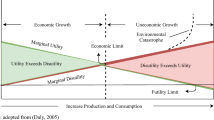Abstract
The main provisions of the Concept of Sustainable Development, formulated in 1992 at the conference in Rio de Janeiro, based on the triad economic–environmental–social sustainability, are accepted as the basis for development by most countries of the world. During this time, an institutional framework for sustainable development has been formed both at the interstate level and at the level of specific states. Reducing air pollution is one of the key tasks that need to be addressed to achieve the 2030 Sustainable Development Goals formulated by the United Nations. In Russia, despite the adoption of the Concept of Transition to Sustainable Development back in 1996, focusing on the environmental components took a long time. The development stages in Russia of the regulatory environment aimed at ensuring sustainable development and reducing the level of atmospheric air pollution are considered. It was revealed that a significant expansion of the regulatory framework in the specified field occurred only in 2017–2019. This is largely due to Russia’s orientation towards achieving the 2030 Sustainable Development Goals and adoption of Russia’s national development goals. Despite the use of such financial mechanisms as the state program of the Russian Federation “Environmental Protection” and the national project “Ecology” to achieve sustainability goals, it was found that the share of environmental protection expenditures in the total volume of federal budget expenditures in 2019 amounted to only 1.3%. At present, in 12 cities of the Russian Federation, the level of air pollution is assessed as high and very high. In seven out of these twelve cities, there are ferrous metallurgy enterprises that exert significant anthropogenic pressure on the environment.
Similar content being viewed by others
Notes
The World Steel Association evaluates eight main and seven additional parameters, assessing the environmental, social and economic sustainability of companies.)
REFERENCES
Indicators of interaction with society, GRI 2000-2006, Version 3.0. http://nfotchet.narod2.ru/olderfiles/1/ Pokazateli_rezultativnosti_v_oblas-90509.pdf. Accessed October 9, 2020.
Resolution adopted by the General Assembly on 25 September 2015, Transforming our world: the 2030 Agenda for Sustainable Development. https:// www. un.org/en/development/desa/population/migration/generalassembly/docs/globalcompact/A_RES_70_1_E.pdf. Accessed October 6, 2020.
Global Energy Statistical Yearbook. https://yearbook.enerdata.net/total-energy.html. Accessed October 6, 2020.
On the state and protection of the environment in the Russian Federation, Official site of the Ministry of Natural Resources of Russia. https://www.mnr.gov.ru/ docs/o_sostoyanii_i_ob_okhrane_okruzhayushchey_sredy_rossiyskoy_federatsii/gosudarstvennyy_doklad_ o_sostoyanii_i_ob_okhrane_okruzhayushchey_sredy_rossiyskoy_federatsii_v_2018_/. Accessed June 25, 2020.
Mealy, P. and Teytelboym, A., Economic complexity and the green economy, Res. Policy, 2020, art. ID 103948. https://doi.org/10.1016/j.respol.2020.103948
Glushakova, O.V., Vaysberg, Ya.A., Fadeykina, N.V., Mikhailov, V.V., and Trifonov, V.A., Architectonics and strategic architecture of regional public administration systems: approaches to conformity assessment, in The European Proceedings of Social and Behavioral Sciences (EpSBS), Nicosia, 2019, pp. 331–341.
Hummels, H. and Argyrou, A., Planetary demands: redefining sustainable development and sustainable entrepreneurship, J. Clean. Prod., 2020, vol. 178, art. ID 123804. https://doi.org/10.1016/j.jclepro.2020.123804
Chernikova, O.P. and Baranov, P.P., Environmental reporting in coal mining, Gorn. Zh., 2018, no. 3, pp. 82–85. https://doi.org/10.17580/gzh.2018.03.14
Lin, B. and Xu, M., Good subsidies or bad subsidies? Evidence from low-carbon transition in China’s metallurgical industry, Energy Econ., 2019, vol. 83, pp. 52–60. https://doi.org/10.1016/j.eneco.2020.105076
Lin, B. and Xu, M., Exploring the green total factor productivity of China’s metallurgical industry under carbon tax: a perspective on factor substitution, J. Clean. Prod., 2019, vol. 233, pp. 1322–1333. https://doi.org/10.1016/j.jclepro.2019.06.137
Du, Z. and Lin, B., Analysis of carbon emissions reduction of China’s metallurgical industry, J. Clean. Prod., 2018, vol. 176, pp. 1177–1184. https://doi.org/10.1016/j.jclepro.2017.11.178
Martins, V.W.B., Rampasso, I.S., Siltori, P.F.S., Cazeri, G.T., Anholon, R., Quelhas, O.L.G., and Leal Filho, W., Contributions from the Brazilian industrial sector to sustainable development, J. Clean. Prod., 2020, vol. 272, art. ID 122762. https://doi.org/10.1016/j.jclepro.2020.122762
Schlor, H., Venghaus, S., and Hake, J.-F., Green Economy Innovation Index (GEII)—A normative innovation approach for Germany and its FEW Nexus, Energy Procedia, 2017, vol. 142, pp. 2310–2316. https://doi.org/10.1016/j.egypro.2017.12.159
Grigor’ev, V.A. and Ogorodnikov, I.A., Problems of cities’ ecologization in the world, Russia and Siberia, Ekol., Ser. Anal. Obz. Mirovoi Lit., 2001, no. 63, pp. 1–152.
Lin, B. and Zhu, J., Policy effect of the Clean Air Action on green development in Chinese cities, J. Environ. Manage., 2020, vol. 258, art. ID 110036. https://doi.org/10.1016/j.jenvman.2019.110036
Bush, J., The role of local government greening policies in the transition towards nature-based cities, Environ. Innovation Soc. Transitions, 2020, vol. 35, pp. 35–44. https://doi.org/10.1016/j.eist.2020.01.015
Kulińska, E. and Dendera-Gruszka, M., Green cities—problems and solutions in Turkey, Transp. Res. Procedia, 2019, vol. 39, pp. 242–251. https://doi.org/10.1016/j.trpro.2019.06.026
Klyuev, N.N., Air quality of Russian cities for 1991–2016, Reg. Res. Russ., 2019, vol. 9, no. 2, pp. 204–212. https://doi.org/10.1134/S2079970519020072
Stepanova, A.V., Improving public administration in atmospheric air protection, Vestn. Ufimsk. Gos. Neft. Tekh. Univ., Ser. Nauka, Obraz., Ekon., 2019, no. 2 (28), pp. 67–74.
Idrees, Z. and Zheng, L., Low cost air pollution monitoring systems: a review of protocols and enabling technologies, J. Ind. Inf. Integr., 2019, vol. 17, art. ID 100123. https://doi.org/10.1016/j.jii.2019.100123
Suman, Air quality indices: a review of methods to interpret air quality status, Mater. Today, 2019, vol. 34, pp. 863–868. https://doi.org/10.1016/j.matpr.2020.07.141
Zhu, J., Jiang, D., Shen, Y., and Shen, Y. Does regional air quality affect executive turnover at listed companies in China? Econ. Model., 2021, vol. 97, pp. 428–436. https://doi.org/10.1016/j.econmod.2020.04.011
Stalinskaya, E.V. and Okhten’, A.A., Conceptual framework for strategic management of sustainable development of metallurgical enterprise, Ekon. Prom-sti, 2012, nos. 1–2 (57–58), pp. 353–360.
Amosova, Yu.E. and Matveeva, M.A., Environment friendly production as an element of sustainable development of metallurgical enterprises, Vestn. Yuzh.-Ural. Gos. Univ., Ser.: Metall., 2019, vol. 19, no. 1, pp. 43–49.
Author information
Authors and Affiliations
Corresponding authors
Additional information
Translated by V. Selikhanovich
About this article
Cite this article
Glushakova, O.V., Chernikova, O.P. Influence of Ferrous Metallurgy Enterprises on Atmospheric Air Quality as an Environmental Component of Sustainable Development of Territories. Report 1. Steel Transl. 51, 249–256 (2021). https://doi.org/10.3103/S0967091221040057
Received:
Revised:
Accepted:
Published:
Issue Date:
DOI: https://doi.org/10.3103/S0967091221040057



